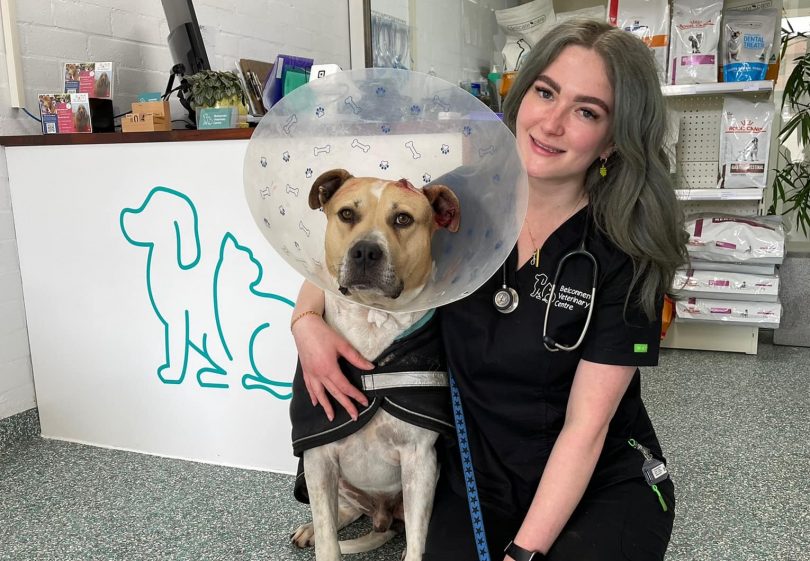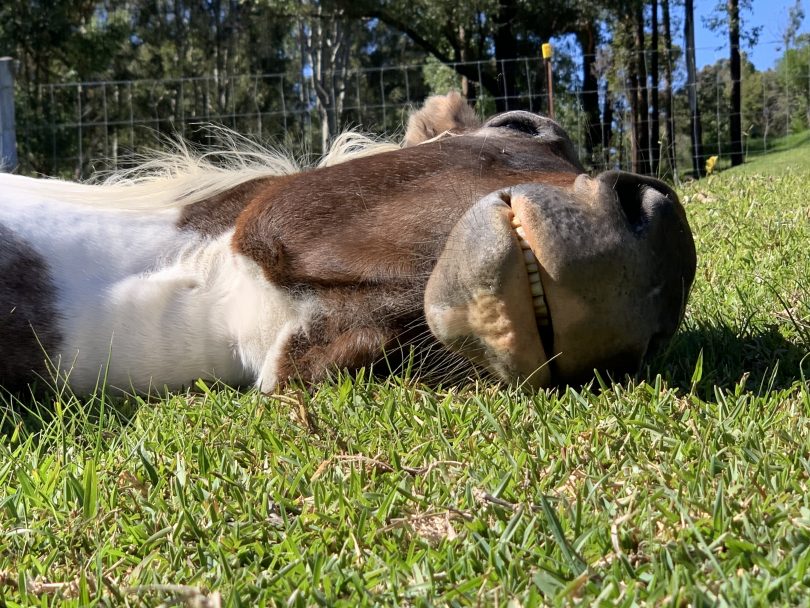
Without vets and veterinary nurses such as Jess Willis, from Belconnen Veterinary Centre, who would take care of our best friends like Bruiser? Photo: Belconnen Veterinary Centre.
The shortage of vets in Canberra and the surrounding region is no secret.
It’s a widely publicised issue and one which has received plenty of media attention at different times in the past few years.
Recently retired veterinarian Dr Mark Hawker, who remains a partner at Young Veterinary Clinic in regional NSW, says it’s become an issue endemic to the industry.
“It’s not a new issue,” he says. “It’s been a problem since I’ve been in practice.”
While the causes of the shortage are varied, research suggests the industry is suffering from a shortage of staff because of the sometimes harrowing nature of the work, low pay, dealing with difficult clients and their expectations of vet care being provided 24/7.
Having worked in Young as a mixed-practice vet for more than 30 years, Dr Hawker knows firsthand the pressure of the job. He is concerned that client expectations, in particular, have increased unfairly to the point where vets cannot deliver the service expected by animal owners, nor can they deliver it within their price range.
“For a number of reasons, all these issues come together at the pointy end in rural areas,” he explains.

It has become increasingly difficult to attract and retain vets in rural and regional areas of Australia. Photo: Kim Treasure.
The difficulty of attracting people to study veterinary science has long been tied to the profession’s relatively low earning capacity, and he thinks the rural recession in the 1970s and 1980s affected this.
“In regional areas, being on call 24/7 means that when you’re out for dinner, at a family party, or in bed and you get the call, you get up and you go no matter what time it is,” explains Dr Hawker.
But he’s worried that people are not understanding how difficult and draining it is to deliver this kind of service, both on resources and mental health.
According to Dr Hawker, this fits in with a broader social and cultural perception that “we can get whatever we want whenever we want”, and in Canberra this is becoming clear with the immense pressure put on emergency and after-hours care.
The longer the hours get, the less the low salary equates to the work being done. These days, he says, people are desiring a much better work-life balance than he was when he graduated university.
Dr Hawker doesn’t think the education of vets is helping the shortage issue. He believes there is a need to teach students how to make difficult decisions, as well as an increased practical focus in the final year of university for veterinary students.
“A lot of the people studying to become a vet are already high achievers, but being faced with making quick decisions all the time is difficult,” he says.
One harrowing statistic presented to a parliamentary committee on mental health and suicide prevention at the end of 2020 suggests the suicide rate for vets is four times higher than the rest of the Australian population.
However, for Dr Hawker, dealing with euthanasia is part and parcel of a vet’s role, and what requires more focus is teaching veterinary students better resilience, especially because it’s a vocation that deals with people’s particularly pointy emotions of grief and guilt.
He also thinks part of this process should be final-year students spending significantly more time in practices, and following cases for months at a time.
“I don’t think the current model is working,” he says.
Dr Hawker also says that if people are going to stay and work in rural and regional areas, they need to be encouraged to study there, too.
Australian Veterinary Association president Dr Warwick Vale agrees with Dr Hawker on the complexity of the issue.
“This is a complex problem that requires a collaborative approach by not only the profession, but greater society as vets are essential to the health and wellbeing of the whole community,” he says.
Dr Vale is also warning that the COVID-19 pandemic will continue to disrupt the movements of international vets who generally form an “important skilled workforce for the Australian veterinary market”.









